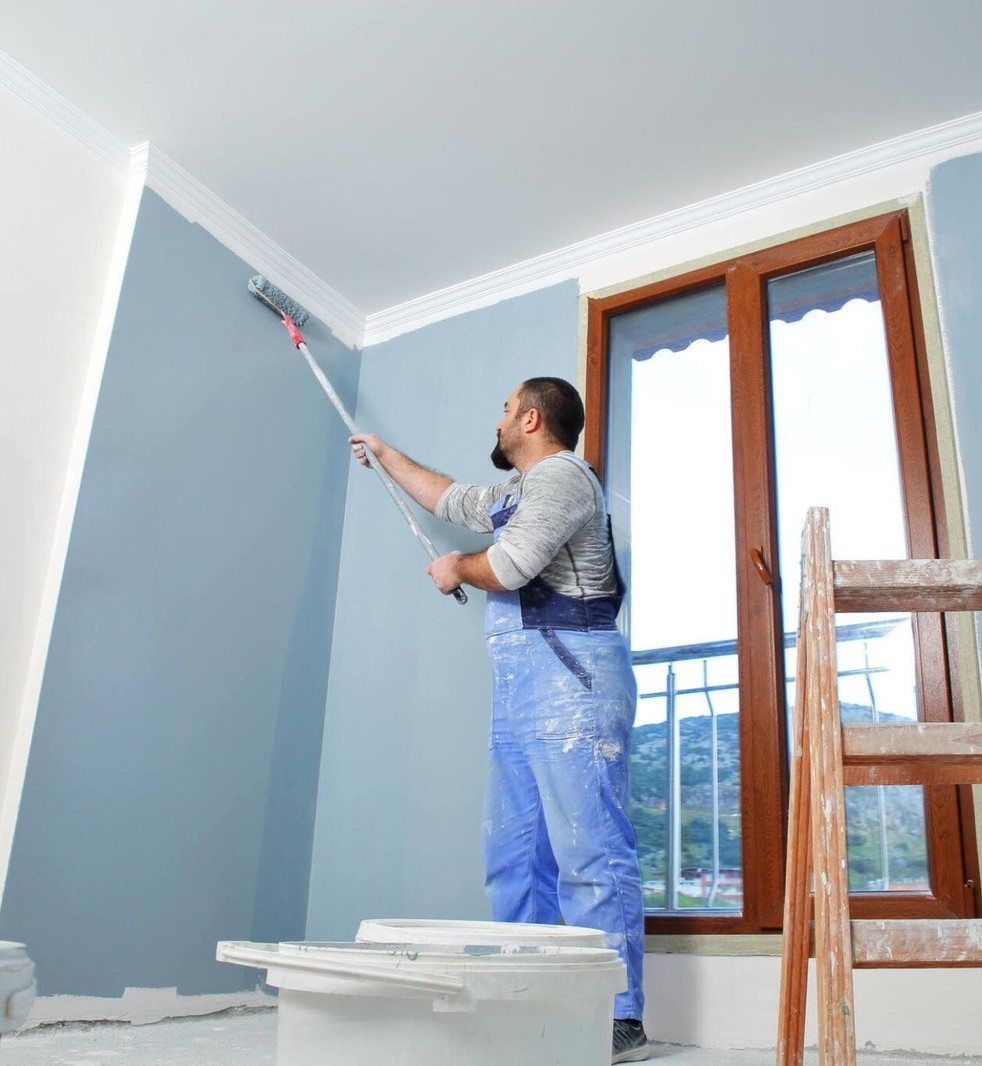Step-by-Step Tutorial: DIY Exterior House Painting Made Easy
Let me tell you, there’s a certain sense of accomplishment that washes over you when you step back and admire a freshly painted house exterior – especially when you did it yourself! I’ve been wielding paintbrushes for years, both on professional jobs and on my own DIY projects, and there’s nothing quite as rewarding as transforming the curb appeal of your home with your own two hands. In this guide, we’ll delve into everything you need to know about DIY exterior house painting, from prepping the surface to achieving a professional-looking finish.
Prepping for Success: Essential Steps Before You Paint
Before you even think about grabbing a paintbrush, a little prep work goes a long way. Here’s what you’ll need to do to ensure a smooth and successful painting experience:
- Timing is Everything: Don’t pick a scorching summer day or a weekend forecast for rain. Aim for mild temperatures (between 50-80°F) with clear skies for optimal drying conditions.
- Gather Your Arsenal: Stock up on essential tools like paint brushes, rollers (different sizes for various surfaces), a drop cloth, painter’s tape, scraping tools, a putty knife, a power washer (optional, but highly recommended), and a sturdy ladder. Safety gear is crucial – wear eye protection, gloves, and a respirator if needed.
- Choosing the Right Paint: Not all paints are created equal, especially for exteriors. Opt for high-quality exterior paint that can withstand the elements. Consider factors like climate, desired finish (flat, satin, etc.), and whether you’re painting a specific material like brick. A trip to your local home improvement store can be a big help – the staff there can advise you on the best paint for your project.
- Preparing the Canvas: Your house exterior needs a clean slate for the paint to adhere properly. Start by removing dirt, cobwebs, and mildew with a hose or a gentle scrub. Power washing can be a real time-saver for heavily soiled surfaces, but be sure to use a moderate pressure setting to avoid damaging the siding. Once the surface is clean and dry, scrape away any loose or peeling paint. Use a putty knife to fill in cracks, holes, or damaged areas. Let everything dry completely before moving on.
- Protect Your Surroundings: Nobody wants paint splatters on their prized rose bushes! Use drop cloths to cover landscaping, walkways, and anything else you don’t want painted. For extra protection, you can also mask off areas like window frames and doorways with painter’s tape.

Safety First: Essential Tips
Safety should always be your top priority when tackling any DIY project, and exterior house painting is no exception. Here are some safety pointers to keep in mind:
Gear Up
Eye protection is a must to shield yourself from paint splatter. Gloves protect your hands, and a respirator is essential if you’re sanding, scraping, or using paint that releases strong fumes.
Ladder Safety
When working on a ladder, make sure it’s placed on stable, level ground. Never lean a ladder against the house – always secure it properly. Don’t overreach – it’s better to move the ladder frequently than risk losing your balance.
Painting Like a Pro: Mastering the Technique
Now comes the fun part – applying the paint! Here are some techniques to ensure a flawless finish:
- The Magic of Painter’s Tape: This sticky friend is your secret weapon for achieving clean lines. Apply painter’s tape around trim, windows, and doorways to create a crisp barrier between painted and unpainted areas.
- Prime Time: Don’t skip the primer! Primer helps the paint adhere better and provides a smooth base coat, resulting in a more even finish and longer-lasting paint job.
- Brushwork Basics: Depending on the size and detail of the area you’re painting, you might use brushes, rollers, or a combination of both. When using brushes, use long, even strokes and avoid overloading the brush with paint.
- Rolling On Success: Rollers are ideal for covering large expanses of siding. Apply the paint in smooth, overlapping strokes, following a top-down approach to avoid drips running down onto freshly painted areas.
- Spray It Right: Paint sprayers can be a time-saver for large surfaces, but they require practice to master. If you’re a beginner, stick with brushes and rollers for better control.
- Building Up Coverage: One coat usually isn’t enough for exterior paint. Apply a thin, even second coat once the first coat is completely dry. For dark or dramatic color changes, you might even need a third coat to achieve full opacity.
Troubleshooting Common Challenges
Even the most meticulous painters encounter minor mishaps. Here’s how to handle some common challenges:
Uneven Application
Don’t panic if you notice drips or streaks. While the paint is still wet, use a clean brush to gently blend them in. For dried imperfections, you can lightly sand the area smooth before touching up with paint.
Weather Woes
Mother Nature can be unpredictable. If rain is on the forecast, stop painting and cover your work with plastic sheeting. Wait until the rain has completely stopped and the surface is dry before resuming.
The Final Touches and Post-Painting Care
You’re almost there! Here’s how to wrap things up and ensure your beautiful paint job lasts:
- The Great Reveal: Carefully peel off the painter’s tape while the paint is still slightly wet to avoid pulling off any paint.
- Cleaning Up: Dispose of paint cans and used materials responsibly according to local regulations. Clean your brushes and rollers thoroughly with soap and water for future use.
- Patience is a Virtue: Allow the paint to dry completely before using or exposing the painted area to harsh elements. Refer to the paint manufacturer’s recommendations for drying times.
- Keeping it Fresh: To maintain the vibrancy of your paint job, give your house a gentle washing with a hose every year or so. You can also touch up minor nicks or scratches as needed to preserve the overall look.
Conclusion: The Sweet Satisfaction of DIY
There you have it! With careful planning, proper preparation, and a little elbow grease, you can achieve a professional-looking exterior paint job that will boost your home’s curb appeal and give you a tremendous sense of accomplishment.
For those who might prefer professional help, Polk County Painting offers a range of high-quality residential and commercial painting services. Their experienced team can handle any project, big or small.
We hope this guide empowers you to tackle your DIY exterior house painting project with confidence. Feel free to share your experiences and ask any questions you might have in the comments section below!
FAQ
How long should I wait between coats of paint when painting my house exterior?
It’s crucial to allow the first coat to dry completely before applying the second coat. Typically, this can take anywhere from 4 to 8 hours, depending on the paint type and environmental conditions.
What should I do if it starts raining while I'm painting my house exterior?
If rain is in the forecast, stop painting immediately and cover your work with plastic sheeting to protect it. Wait until the rain has completely stopped and the surface is dry before resuming painting to avoid water damage and adhesion issues.
How often should I wash my house exterior after painting to maintain its appearance?
It’s recommended to give your house a gentle washing with a hose every year or so to remove dirt and debris that can dull the paint’s vibrancy. Additionally, you can touch up minor nicks or scratches as needed to keep your home looking fresh.
